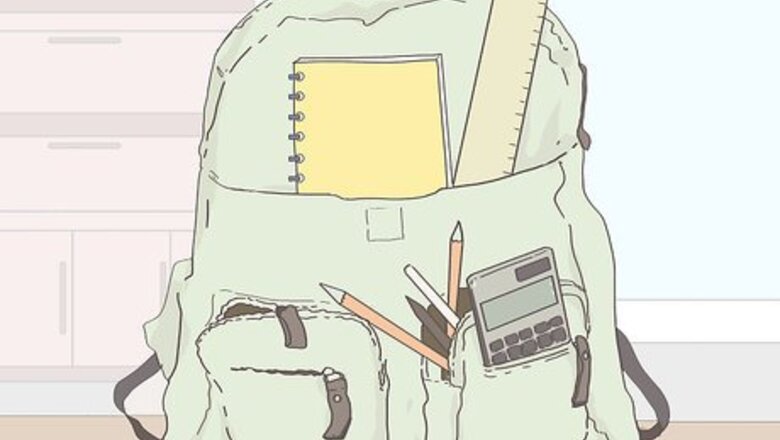
views
Taking the Test Effectively
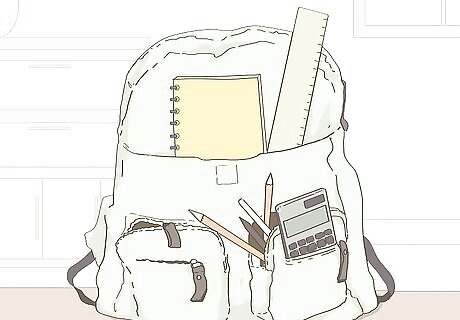
Bring all the necessary equipment for the test. On some tests you just need a pen or pencil, but for math tests you may need more tools. Remember your calculator, protractor, ruler, compass, and anything else that you need to take the test. You’ll be at a big disadvantage if you’re allowed to use these tools and you don’t have them.
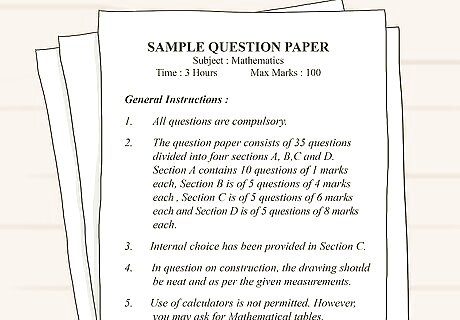
Read all the directions before starting your work. Understand exactly what you have to do on this test. The teacher may have written specific instructions that you have to follow. Read and follow all the directions given to avoid losing points. Don’t lose silly points for not following directions. For example, your teacher may have instructed you to circle all your final answers in pen. If you skipped reading the instructions, you wouldn’t see this, and you’d lose points that you otherwise would’ve gotten.
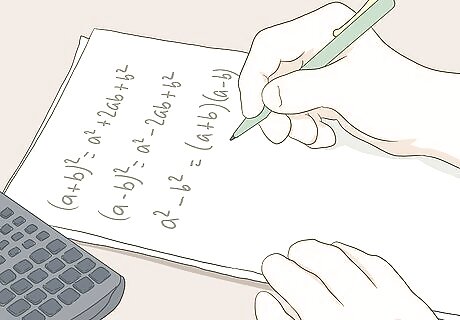
Write down all the formulas you need at the start of the test. Most math tests involve remembering numerous formulas to solve different problems. Even if you studied and know them well, you could forget some if you get nervous during the test. Prevent this by doing a “brain dump” and writing down all the necessary formulas at the beginning of the test. Then refer back to this list if you forget any formulas. Also briefly write down the situation you would use the formula in. Instead of just writing “Pythagorean Theorem: a2 + b2 = c2,” add “Find the sides of a right triangle” so you know what the formula is for. If there isn’t room for extra writing on the test, ask your teacher if you can use a blank piece of scrap paper. Show the teacher that there is nothing on the paper. Then write all your formulas on this paper and use it as a reference.
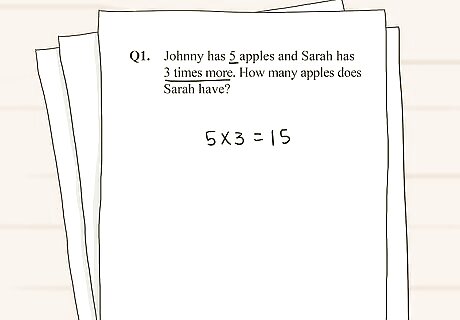
Pay careful attention to word problems. Word problems are especially tricky because it isn’t always clear what the question is asking, or you may be confused by how the question is worded. Take extra time on word problems to identify the point of the question. Read through it slowly and underline important words that guide you to the calculations you have to make. Put the word problem into mathematical form to make it clearer. If a problem says, “Johnny has 5 apples and Sarah has 3 times more. How many apples does Sarah have?” Write out 5 x 3 to put the problem in mathematical form. It probably makes a lot more sense that way. If you get stuck, break the question down to its components. Cross out words that aren’t important. Then translate words into math terms. For instance, the word “of” usually means you have to multiply, and "per" usually means division. Keep an eye out for words like these that you can turn into math terms.
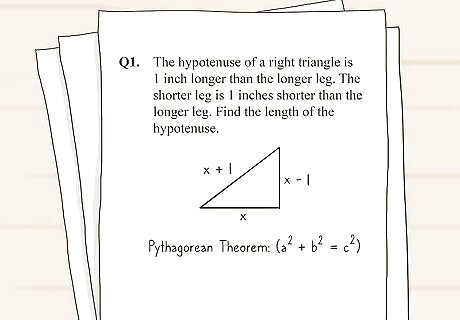
Show all your work if partial credit is allowed. Some teachers allow partial credit if you set up an equation correctly and are on the right track to working it out. Get as much credit as possible by writing all your work neatly. Even if you can’t get the right answer, you can get a few valuable points. For example, you might know that a problem requires the Pythagorean Theorem, a2 + b2 = c2. First write that equation out without plugging any numbers in. Then plug the numbers you know into the correct place. This demonstrates to the teacher that even if you get the wrong answer, you know which processes you're supposed to do. You could earn partial credit from that. Showing your work also helps you even if there is no partial credit. With a neat rundown of your work process, it’s easier to spot any mistakes. If you are stuck on a problem, go back through your work. See if you made a mistake somewhere or if you set up the equation incorrectly.
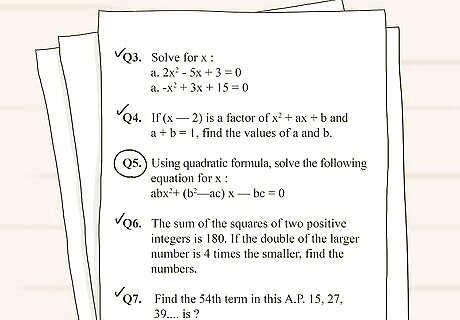
Skip questions you’re stuck on and return to them later. It’s probably inevitable that you’ll hit a question that stumps you. If you come to one of these questions, skip it for now. There are probably other questions on the test that you can get quickly. You could spend too much time solving this one and run out of time for the rest of the test. Come back to these harder questions after completing the rest of the exam. If there are 20 questions and you have 40 minutes for the test, that means you have 2 minutes to spend on each question. If a minute has gone by and you don’t know where to start with a question, skip it. You risk running out of time if you keep mulling it over. As a reverse strategy, you could go through the test and do all of the ones you know right away first. Then you have plenty of time to work out harder problems.
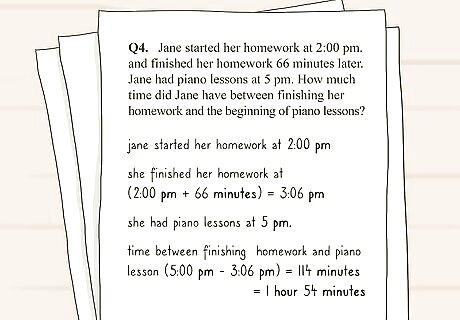
Make sure all your answers are in the correct unit and value. Some math tests say that your answers have to be in the correct value like miles per hour, kilograms, and the like. If a problem uses any units like these, put them in your final answer. Also be careful with positive and negative numbers. If a number should be negative but you forget the negative sign, the answer is wrong.
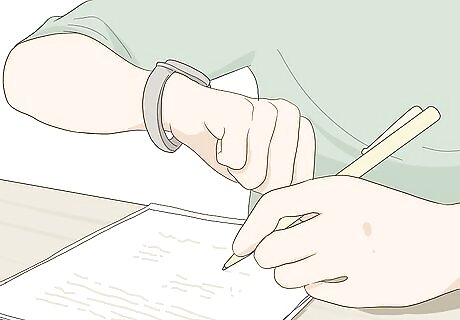
Use extra time to check your work. If you finish early, make the most of the extra time and look over your test. Read the directions again to make sure that you’ve followed all the rules. Make sure you’ve shown your work and all your answers are in the correct units. Try reworking some of the questions you thought were hard and confirming your answer. Remember that math works in two ways. Check your answers by doing the reverse operation. For example, if you find in 8x = 40 that X = 5, try multiplying 8 by 5. If you get 40, the answer is correct. If in the same equation you get X = 6, multiplying 8 by 6 would produce 48, so you'd know the answer was wrong.
Working Through Hard Problems

Use relaxation techniques if you get flustered from a hard question. Getting stuck on a question is definitely stressful, but don’t let that ruin the rest of the test. Stress can stop your mind from working properly. Take a minute to relax yourself if you feel anxious. Then return to the question with a clear mind. You may realize that you know the answer after all. Do some deep breathing to relax your heart rate and release your anxiety. Close your eyes and focus on relaxing each muscle group if you’re feeling tense. Stretch your arms a little to get your circulation flowing again.

Identify what the question is asking you. If you’re stuck on a problem, you’ll never solve it if you don’t understand what the problem is actually asking. Take a step back and look at the problem again. Think about what this problem is asking. Is it asking for speed? Is it a geometry question? If so, what shape is involved? All these questions will help you identify what you have to do. If it’s a numerical problem, think about what formula you might need. Go back to your list of formulas and see which one this problem corresponds with. If it’s a word problem, break the question down to its components. Cross out words that aren’t important. Look for words that tip you off to which operation you have to use. For instance, the word “of” usually means you have to multiply.
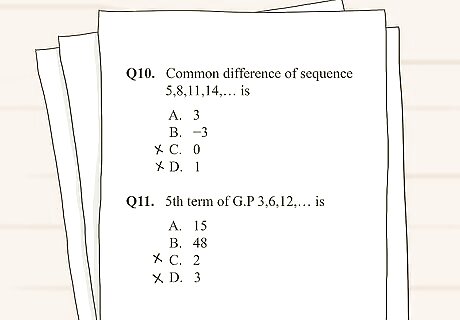
Eliminate multiple choice answers you know are wrong. The process of elimination is a big help if you’re stuck on a multiple-choice question. Look at the answers and cross out ones that seem wrong. Then try to discern an answer from what’s left. There are a few ways to tell if an answer seems wrong. For example, if the result you’re getting is close to 3 answers but nowhere near the 4th, eliminate that one. If you can narrow the answers down to 2, run your calculations again. If your result is closer to one of the 2 answers, pick that answer.
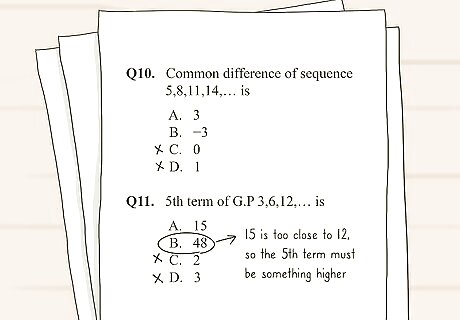
Strategically guess if you can’t choose an answer. Sometimes you’ll just be stuck and unable to solve a problem. This happens. Remember that this is only one question and if the rest of your test is good, you’ll do fine. Do your best to pick an answer. You might get lucky and choose the right answer. For a multiple-choice test, choose the answer that seems the best. If this isn’t a multiple-choice test, write down the answer that you got. It may be the correct answer after all.
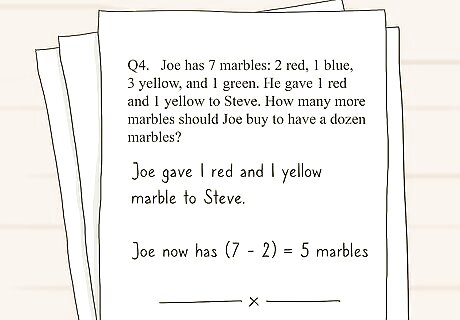
Leave your work if you can’t get an answer. If you’re completely lost and can’t even guess an answer, don’t erase your work. If the teacher gives partial credit, you might still get a few points for your work.
Preparing for Tests
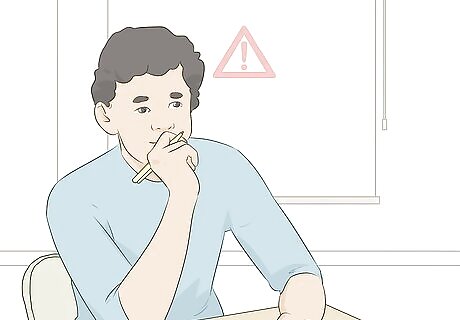
Pay attention during class. The work of preparing for a test begins long before the actual test. If you're attentive during class, you'll know the material much better for test day. Always get to class on time, take out your pen and notebook, and be ready to work. Participate in class discussions and ask questions if you need any clarification. Take effective notes so you have good material to study from. Review your notes regularly. Eliminate distractions while you're in class. Don't browse on your phone or talk to your friends.
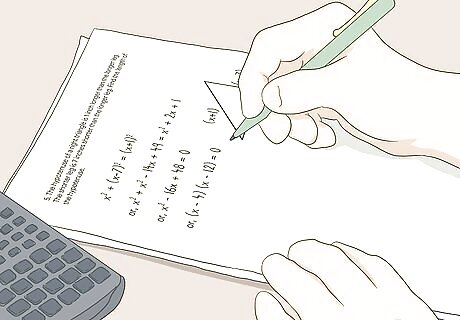
Do your homework. While you may not like homework, the point of it is giving you more practice so you can do well on tests. This is especially important with math, because using different formulas and equations requires a lot of practice. Do all the homework that your teacher assigns so you're ready for the test. Get comfortable, but not too comfortable. Doing homework on your bed tempts you to take a nap. Remove distractions, turn off the TV, and sit in a quiet room to do your work. If you were stuck on a problem during homework, ask the teacher for an explanation the next day. This question just might be on the test.
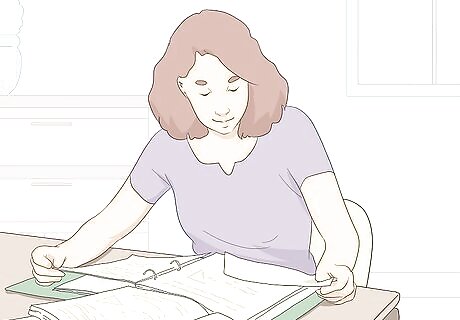
Study a few days before the test. Don't cram for a test. As soon as the date is announced, start preparing. Look over your notes and textbook to review the material each day for a few days before the test. This way, you avoid anxiety the night before the test by trying to learn everything in a few hours. Focus on questions you got wrong in your classwork or homework. Examine why you got this question wrong and how you can improve. Use any review aids or prep material your teacher gave you. If your teacher told you something would be on the test, listen to them. Look for practice tests online to help you study, too. Reader Poll: We asked 145 wikiHow readers, and 69% of them agreed that the best way to prepare for a test is to take online practice tests. [Take Poll]

See your teacher for extra help if you’re not confident. Even if you studied well and paid attention in class, there may still be things you're unsure of. In this case, don't hesitate to go to your teacher for more explanation. Have a specific list of problems you’d like to discuss with the teacher because they will probably ask “What don’t you understand?” Try to be more specific than “I don’t understand anything!” Ask for help at least a day before the test. Don't ask the day of the test because you won't have enough time to study. EXPERT TIP Joseph Meyer Joseph Meyer Math Teacher Joseph Meyer is a High School Math Teacher based in Pittsburgh, Pennsylvania. He is an educator at City Charter High School, where he has been teaching for over 7 years. Joseph is also the founder of Sandbox Math, an online learning community dedicated to helping students succeed in Algebra. His site is set apart by its focus on fostering genuine comprehension through step-by-step understanding (instead of just getting the correct final answer), enabling learners to identify and overcome misunderstandings and confidently take on any test they face. He received his MA in Physics from Case Western Reserve University and his BA in Physics from Baldwin Wallace University. Joseph Meyer Joseph Meyer Math Teacher Review basic concepts before diving into advanced topics. Identifying the gaps in your knowledge helps you avoid difficulties later on. Take an assessment or get your teacher's advice on where you can improve. Practice targeted exercises to build a strong foundation so you can confidently tackle new lessons.











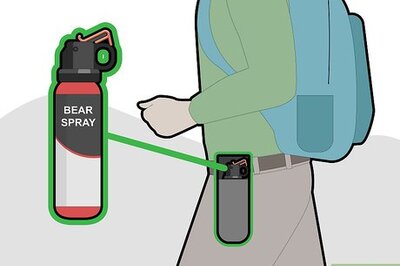


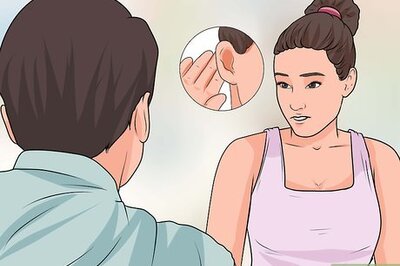





Comments
0 comment